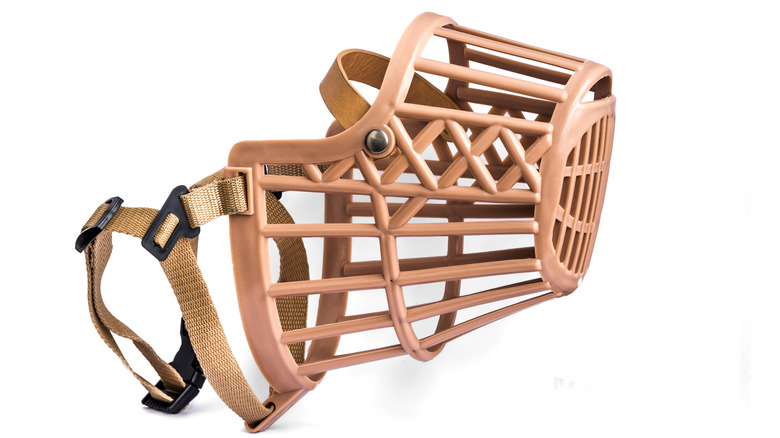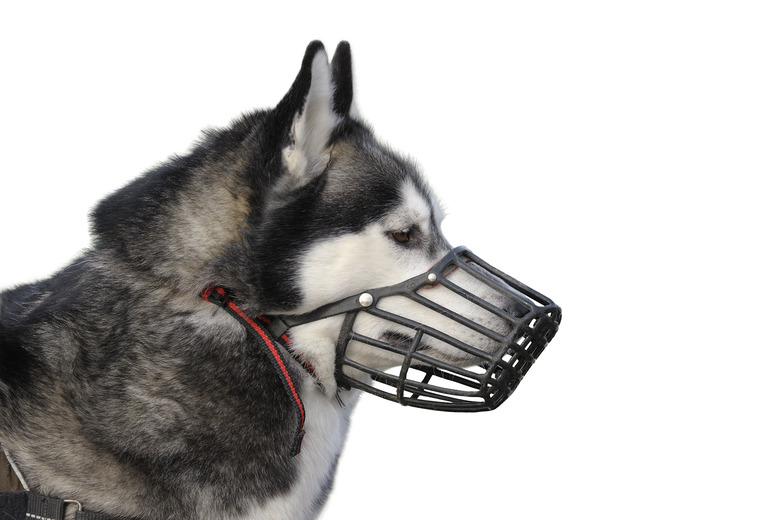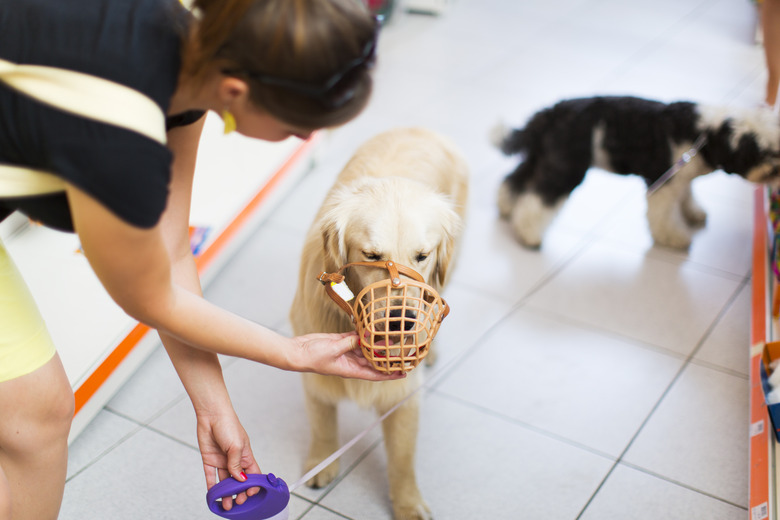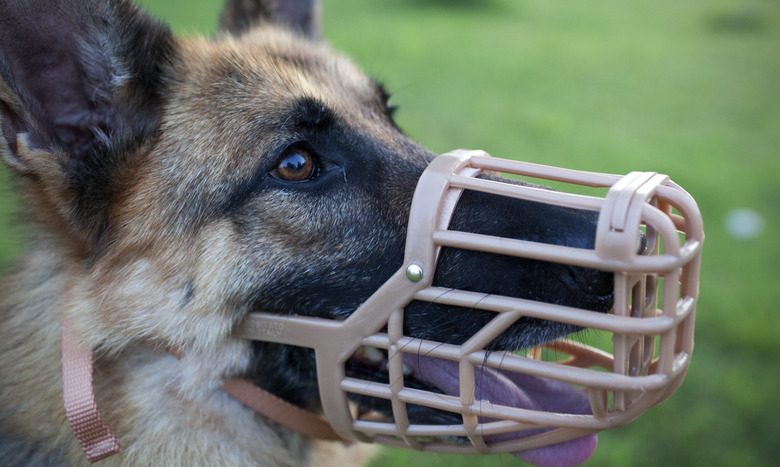Should Your Dog Use A Muzzle? Why Muzzle Training Is A Good Idea
Although some dog lovers don't like the look of muzzles, they can be a great way to keep your dog safe in stressful situations. Muzzles might seem cruel or unnecessary, but muzzle training can help to keep dogs and people safe — and can even be fun for dogs. When wearing a properly fitted basket-style muzzle, dogs can pant, drink water, and eat treats comfortably. But, what they can't do is bite. Even if you have a dog who has never given any indication that they will bite someone, muzzle training your dog can still be a good idea.
Why muzzle
Why muzzle
Even though dogs are our best friends it's important to remember that all dogs, (even the sweetest and nicest dogs) are capable of biting. Muzzle training is an important part of dog training for all dogs, not just dogs who might be struggling with behavioral issues, or who have a history of biting. Muzzles can elicit big feelings from people, but it's important to know that a dog wearing a muzzle isn't a "bad dog" or " an aggressive dog," — it's a misconception to assume. A dog wearing a muzzle is a sign that their human is proactive and attentive to their dog's needs.
Types of muzzles
Types of muzzles
There are many types of muzzles available for use. There are a variety of muzzles that come in bright and fun colors — to make the muzzle look less intimidating. The most comfortable muzzle for dogs and the most appropriate style for regular use is called a "Baskerville muzzle". Baskerville muzzles are a popular type of basket muzzle. This muzzle will cover your dog's nose, but they will still be able to smell and engage with their surroundings. More specifically, the basket muzzle also allows for a dog's mouth to be open — so they can drink water, pant, and eat treats.
Reasons to muzzle
Create space
If you have a dog who is reactive, aggressive, or uncomfortable being approached by other dogs or people you may want to consider muzzle training your dog for their walks. When people see a dog wearing a muzzle, they will often automatically give that dog and their parent more space. While it's no guarantee that a muzzle will prevent your dog from being approached, it can be one way to advocate for your dog's comfort.
Trash eating
Do you have a dog who has a habit of eating things they shouldn't while on their walks? Some dogs are drawn to eating trash, discarded food, poop, and rocks while on walks. It's a good idea to teach your dog to drop or ignore objects they shouldn't eat, but if they have a history of consuming objects they shouldn't, you may want to consider putting a muzzle on them. If your dog eats something they shouldn't, they could get sick and end up at the vet. A muzzle (when properly introduced) will allow you both to enjoy your walks together without this added anxiety.
Bite risk
The most obvious reason why you might want to muzzle train your dog is if your dog has bitten another dog or a person, or if you think it's likely your dog might bite. For dogs who are anxious around other dogs and people, a properly fitted and conditioned muzzle can be an important tool for keeping others safe while you gently train your dog and increase your pet's comfort. Make sure you are always aware of your dog's stress level while you are training them. Having a muzzle on your dog isn't an excuse or reason to put them in a situation where they are overly stressed out by the muzzle. The muzzle should just be a way to prevent a bite from happening.
Emergencies
Teaching your dog to be comfortable wearing a muzzle can come in handy in the event of an emergency. Dogs who have never bitten before can also bite people they know and love if they are injured or in pain. With this in mind, it is safest to put a muzzle on your injured dog first — before trying to move them. In the event of a serious emergency, a vet will likely muzzle your dog for safety. If your dog is already comfortable wearing a muzzle it can make a stressful situation less uncomfortable for your dog.
Vet visits
Many dogs are nervous or uncomfortable at the vet. For these dogs, being proactive and conditioning them to be comfortable wearing a muzzle can reduce stress for you and the vet clinic staff with handling your dog. Some vet clinics prefer to muzzle dogs for vaccines and other exams. If your dog associates wearing a muzzle with treats and other good things, they won't be stressed if they are asked to put a muzzle on at the vet.
Legal requirements
Unfortunately, breed-specific legislation is in effect for apartment buildings, cities, and municipalities. These breed restrictions discriminate against certain dog breeds based on unscientific preconceived ideas about those dog breeds and aggression. Some breed-specific legislation requires dogs of a certain breed to not live in the area or it requires those dogs to be muzzled. If your dog ever bites someone, you could be required by local law enforcement to have your dog muzzled while out in public. This difficult time can become less stressful — if your dog is already comfortable wearing a muzzle.
Proper muzzle introduction
Proper muzzle introduction
When first introducing your dog to a muzzle, it's important to plan how you will introduce it to them. It is good to do this slowly. Use positive reinforcement training approaches and introduce the muzzle to your dog in short training sessions — pairing the training with treats. That way, your dog will make positive associations about wearing a muzzle. You want to make muzzle training fun for your dog, like teaching any other skill.
Go at your dog's own pace with getting used to the muzzle. Show your dog the muzzle and let them sniff it. Then, when your dog puts their face into the muzzle offer them treats and praise. Over time, you'll be able to build upon the amount of time your dog willingly offers their face to wear the muzzle. Then, you'll be able to transition attaching the muzzle to your dog for short periods of time, all while treating your dog through the muzzle basket. A proper introduction to a muzzle is key to helping your dog develop positive associations with wearing the muzzle. Don't just put the muzzle on your dog and see how they respond. You can also schedule an appointment with a dog trainer who uses positive reinforcement techniques to also help you introduce your dog to their new muzzle.
What muzzles aren’t
What muzzles aren't
Muzzles aren't a solution for everything, nor are they appropriate for all situations. Muzzles are not a way to prevent barking. When wearing a properly fitted basket muzzle a dog should still be able to bark comfortably. Muzzles should also never be left on a dog for prolonged periods of time and they shouldn't be worn by dogs who are unsupervised for any length of time. A dog should only wear a muzzle to keep them and others safe.
Seek out support
Seek out support
If you're struggling with behavior modification training or aren't certain if a muzzle is right for your dog, it's always helpful to work with a dog trainer in your local area. If you're looking to learn more or find encouragement and support from other dog parents who muzzle their dogs, the Muzzle Up! Project is an advocacy organization and resource for dog parents, trainers, and other dog professionals.
There are many reasons why you might want to muzzle train your dog. A muzzle can prevent your dog from eating trash, ease anxiety over how your dog will react in certain situations, or for vet appointments. Muzzle training is useful for emergencies, even if your dog has never given any indications of biting. When properly introduced, basket muzzles are a comfortable option for dogs to wear for protection.





